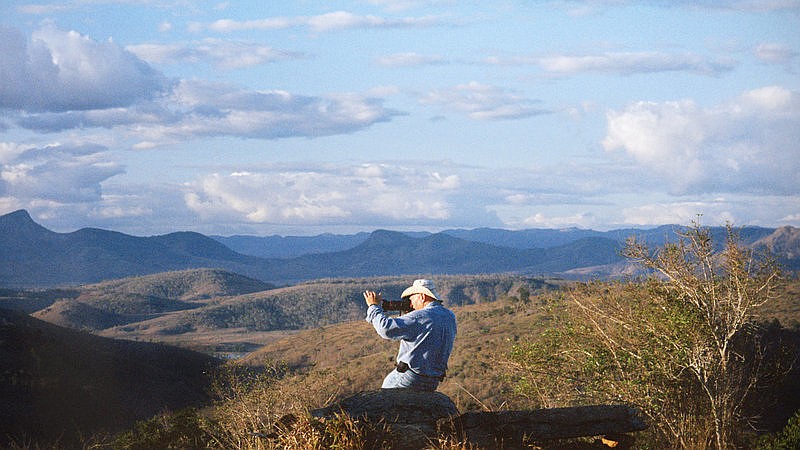- April 24, 2024
-
-
Loading

Loading

"A film about the life of a photographer?" These are the first words we hear in the masterful documentary, "The Salt of the Earth." The sarcasm is immediately dispelled as we are uncontrollably drawn into the world of the extraordinary photographer, Sebastiao Salgado.
For over 40 years, Salgado has captured the human condition through his lens in an unparalleled and unique manner. Unlike other photo journalists, he gets up close and personal with his subjects. Salgado doesn't merely get the shot, he lives with those he photographs and shares their lives.
Salgado ventures into "the hear of darkness," chronicling some of the most horrific events in human history. From famines to genocides to the burning oil fields of Kuwait, his photos stand as a testament to people being "ferocious animals." But after decades of witnessing so much death and destruction, Salgado says he "felt himself dying." Suddenly, later in life, he finds a new direction in which to channel his work.
Salgado returns to his rural Brazilian roots ... specifically, the now barren farm upon which he was raised. His faith in mankind is rekindled when he and his unwavering wife, Lelia, manage to regrow the rain forest that he so lovingly remembered as a child. At age 70, Salgado chooses not to mourn the planet on which he lives, but rather rejoice in the immense hope that can be generated by fixing it.
Wim Wenders teams up with Salgado's son, Julian, to direct this visually astounding story of a man's life. The images are haunting and provocative, complex and simplistic, mesmerizing and spiritual. In a stroke of genius, Salgado's live image is super-imposed upon his iconic photos as he narrates. It serves to further emphasize the intimate bond that he had with his subjects.
Watching "The Salt of the Earth" is as close to being a religious experience as it gets. You cannot take your eyes off of the screen. His images evoke tears whether they're disturbing or beautiful. At times, you'd swear that the people in his photographs are actually moving. In the latter, hopeful period of Salgado's life, he shoots penguins trekking across a vast wilderness. Ironically, it mirrors the mass exodus of starving, displaced human beings evident in his earlier work. The poignancy of Salgado's artistry definitely transcends space and time.